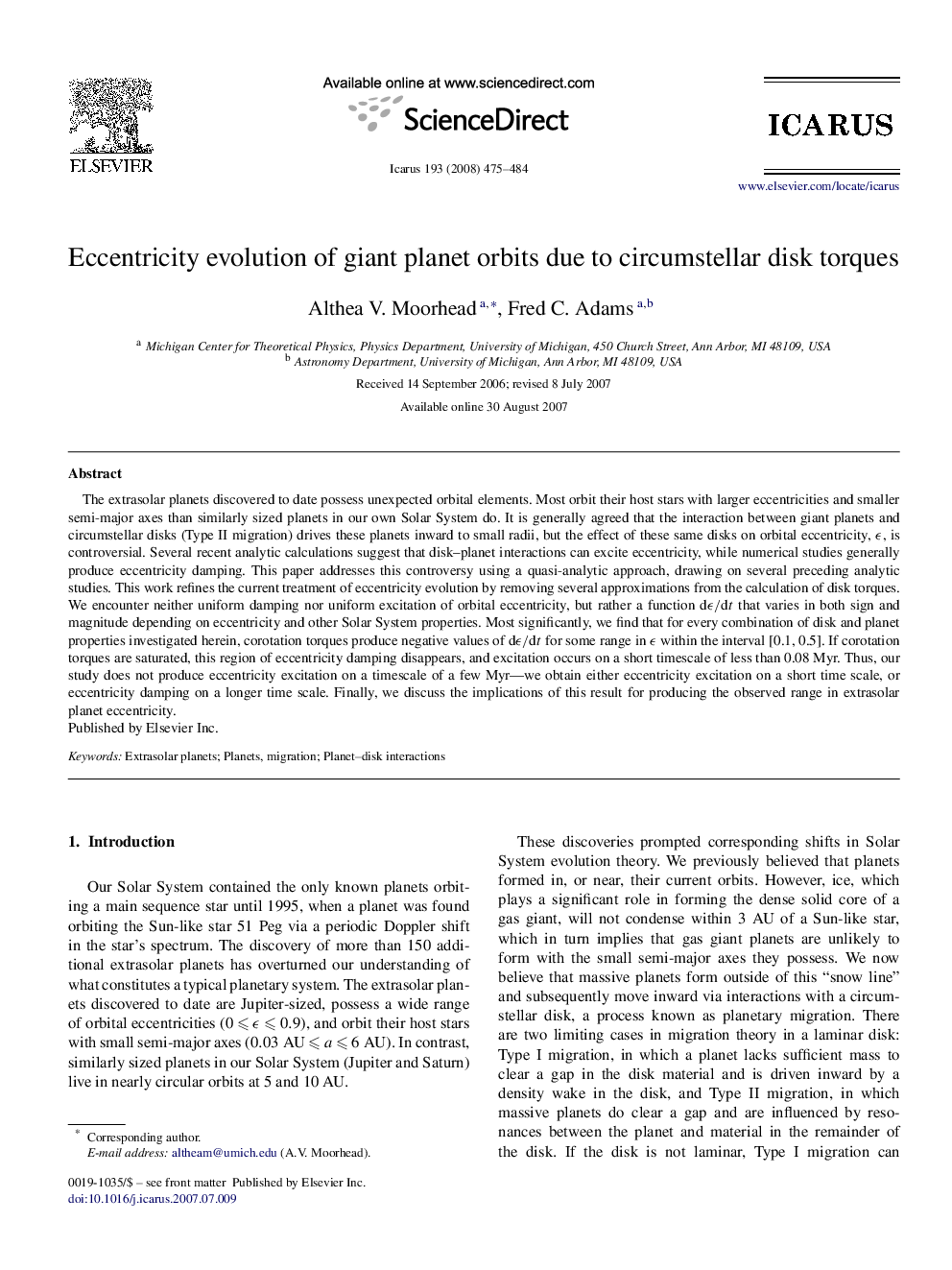| Article ID | Journal | Published Year | Pages | File Type |
|---|---|---|---|---|
| 1775369 | Icarus | 2008 | 10 Pages |
The extrasolar planets discovered to date possess unexpected orbital elements. Most orbit their host stars with larger eccentricities and smaller semi-major axes than similarly sized planets in our own Solar System do. It is generally agreed that the interaction between giant planets and circumstellar disks (Type II migration) drives these planets inward to small radii, but the effect of these same disks on orbital eccentricity, ϵ, is controversial. Several recent analytic calculations suggest that disk–planet interactions can excite eccentricity, while numerical studies generally produce eccentricity damping. This paper addresses this controversy using a quasi-analytic approach, drawing on several preceding analytic studies. This work refines the current treatment of eccentricity evolution by removing several approximations from the calculation of disk torques. We encounter neither uniform damping nor uniform excitation of orbital eccentricity, but rather a function dϵ/dtdϵ/dt that varies in both sign and magnitude depending on eccentricity and other Solar System properties. Most significantly, we find that for every combination of disk and planet properties investigated herein, corotation torques produce negative values of dϵ/dtdϵ/dt for some range in ϵ within the interval [0.1, 0.5]. If corotation torques are saturated, this region of eccentricity damping disappears, and excitation occurs on a short timescale of less than 0.08 Myr. Thus, our study does not produce eccentricity excitation on a timescale of a few Myr—we obtain either eccentricity excitation on a short time scale, or eccentricity damping on a longer time scale. Finally, we discuss the implications of this result for producing the observed range in extrasolar planet eccentricity.
